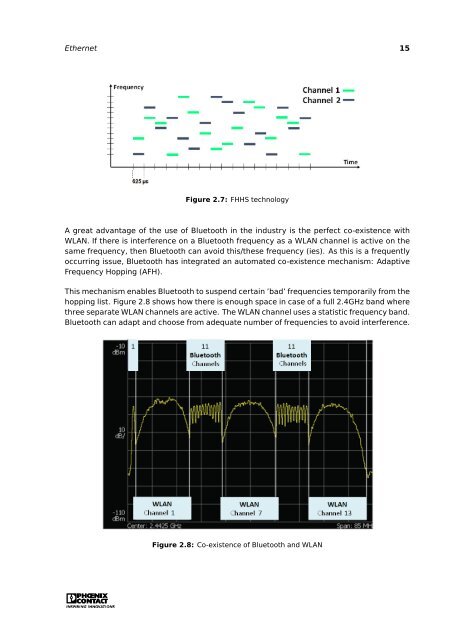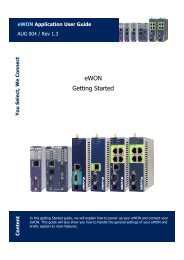Click to download Ethernet Basics manual - Grant Industrial Controls
Click to download Ethernet Basics manual - Grant Industrial Controls
Click to download Ethernet Basics manual - Grant Industrial Controls
You also want an ePaper? Increase the reach of your titles
YUMPU automatically turns print PDFs into web optimized ePapers that Google loves.
<strong>Ethernet</strong> 15<br />
Figure 2.7: FHHS technology<br />
A great advantage of the use of Blue<strong>to</strong>oth in the industry is the perfect co-existence with<br />
WLAN. If there is interference on a Blue<strong>to</strong>oth frequency as a WLAN channel is active on the<br />
same frequency, then Blue<strong>to</strong>oth can avoid this/these frequency (ies). As this is a frequently<br />
occurring issue, Blue<strong>to</strong>oth has integrated an au<strong>to</strong>mated co-existence mechanism: Adaptive<br />
Frequency Hopping (AFH).<br />
This mechanism enables Blue<strong>to</strong>oth <strong>to</strong> suspend certain ’bad’ frequencies temporarily from the<br />
hopping list. Figure 2.8 shows how there is enough space in case of a full 2.4GHz band where<br />
three separate WLAN channels are active. The WLAN channel uses a statistic frequency band.<br />
Blue<strong>to</strong>oth can adapt and choose from adequate number of frequencies <strong>to</strong> avoid interference.<br />
Figure 2.8: Co-existence of Blue<strong>to</strong>oth and WLAN




